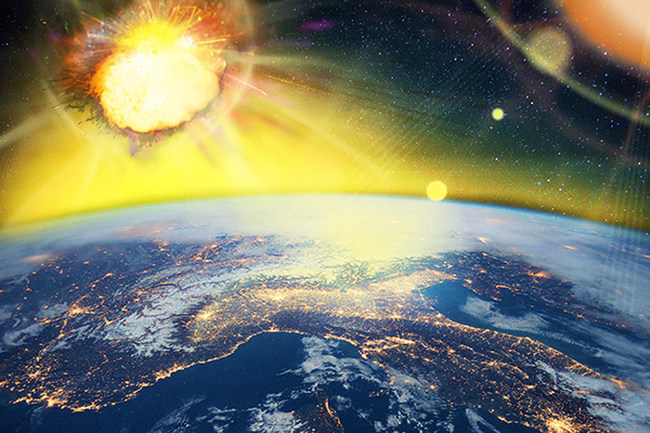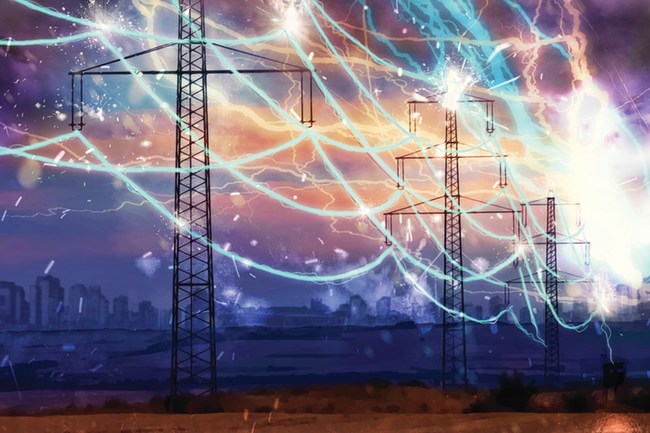
American homes and businesses across the nation have installed surge protection devices to guard against nearby lightning strikes and power line surges.
Such protective measures help to prevent damage to sensitive electronics, including computers, appliances, and televisions.
However, NASA engineer and author of numerous bestselling books on family preparedness, claims that while valuable, such devices do little to protect against two unique threats: the electromagnetic pulse (EMP) and the solar coronal mass ejection (CME), explains Dr. Arthur Bradley, Inventor of the EMPStorm.
(Hear from Dr. Bradley directly to hear more. My apologies for audio quality. EMPstorm is now taking pre-orders for a new whole-house surge protection device that guards against the conducted effects of an EMP and Solar Storm (as well as lightning and other more common surges). Courtesy of EMPstorm and YouTube. Posted on Oct 19, 2018.)
An EMP is a powerful electromagnetic disturbance that results when a nuclear warhead is detonated in the atmosphere.

In 2001, the government appointed the “EMP Commission” to study the threat and its possible effects on our nation’s infrastructures.
They concluded that an EMP “has the capability to produce significant damage to critical infrastructures that support the fabric of U.S. society.”
Such an attack would induce enormous energy pulses on the electrical grid, resulting in widespread damage to electronics.
A similar disturbance could result from a solar event, known as a coronal mass ejection.
Dr. Bradley explains that a CME is a plasma of charged particles that washes over the earth and causes tremendous currents to flow in long conductors.
Such ejections are common and well documented, with the Sun producing one about every 3-5 days.

EMP vs. CME
The differences between a massive solar storm and an EMP are twofold.
First, unlike in the case of an EMP, a solar event would only have low-frequency content, which means that it would be limited to coupling onto long conductors.
This means that free-standing electronics, like cars or iphones, would not be damaged.
Instead, it would be things that drew power from the electrical grid that were destroyed.
The second difference between an EMP and a solar storm is that an EMP is not a certainty.
Perhaps our enemies will never decide to initiate such an attack, although I should point out that both Russia and North Korea have explicitly threatened to do so.

By comparison, a solar storm is a certainty.
Simply put, it is only a matter of time before Earth is hit by a large coronal mass ejection that cripples our electrical grid and causes unimaginable damage to electronics all around the nation.
It’s a case of when, not if.
Incredibly powerful solar storms strike the Earth once every 100-200 years, with the last one occurring in 1859.
That storm, known as the “Carrington Event,” was so powerful that it resulted in telegraph stations catching fire.
(The 1859 solar storm, also known as the Carrington Event, remains the largest on record – but how would it effect the Earth if it happened today? Courtesy of the Met Office – Learn About Weather and YouTube. Posted on Aug 31, 2018.)
“An EMP or large CME would cause extensive damage not only to the electrical grid, but also to electronics connected to it,” points out Dr. Bradley.
He goes on to explain that the long-duration energy pulse would result in the immediate destruction of existing surge protection devices.

To address these grave threats, he announced the development of a new whole-house surge protection device, the “EMPStorm,” which is specifically designed to guard against the conducted pulses resulting from an EMP or solar storm.
According to Dr. Bradley, the “EMPStorm,” is already receiving national attention.
“People are pre-ordering it for their homes and businesses because it’s the first of its kind.”
Not only will it protect against commonplace surges, such as lightning, it will also guard against EMPs and solar storms.
(Learn More. ‘As I prepare to develop a surge protection device that guards against the conducted effects of a solar storm or electromagnetic pulse, I took a careful look at several surge protection devices on the market. You’ll be surprised by the difference in quality.’ Courtesy of EMPstorm and YouTube. Posted on Oct 14, 2018.)
















